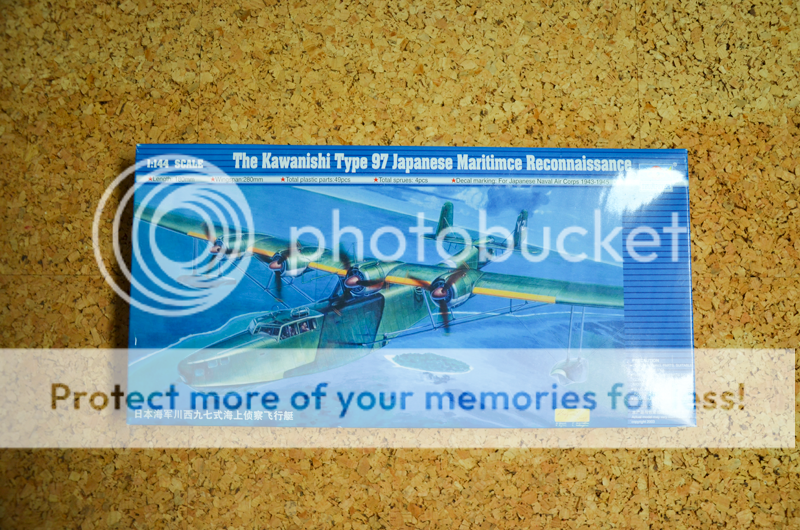
Here is some history about the plane:
* In 1933, the Imperial Japanese Navy (IJN) issued a requirement for an experimental large flying boat. Kawanishi submitted two designs for monoplane flying boats, including the "Type Q" with four engines, and the "Type R" with three. The IJN puzzled over these submissions for a time, then issued a revised specification in early 1934. Kawanishi replied with a new design, the "Type S", evolved from the two earlier submissions. The Type S was accepted, and the first of four prototypes of the "H6K1", as the IJN designated it, performed its initial flight on 14 July 1936, with Katsuji Kondo at the controls. Service trials began at the end of the month. The second and third prototypes followed in 1937, and the fourth in 1938.
The H6K1 was designed by a team under Yoshio Hashiguchi and Shizuo Kikuhara, leveraging off data provided by a Kawanishi group that had visited Short Brothers in the UK. It was a neat prewar flying boat design of metal construction, with some similarities to the US Consolidated PBY Catalina, but arguably more attractive, and certainly bigger. The initial prototype had a streamlined hull, a strut-mounted wing with four Nakajima Hikari 2 nine-cylinder air-cooled radial engines with 625 kW (840 HP) each, and a twin-fin tail. It carried a crew of nine.
The H6K1 had light defensive armament of three guns, consisting of a single 7.7 millimeter (0.303 caliber) Type 92 machine gun in a power-driven dorsal turret, and the same weapon on flexible mounts in nose and tail. Offensive armament consisted of two 800 kilogram (1,764 pound) torpedoes mounted on the wing bracing struts, or up to a total of 1,000 kilograms (2,200 pounds) of bombs using a similar carriage scheme.
* Some changes in the design were made during prototype evaluation. The first, third, and fourth prototypes were brought up to full operational fit, re-engined with Mitsubishi Kinsei 43 radials with 745 kW (1,000 HP) each, and delivered to the IJN in January 1938. They were given the designation "H6K1 Type 97 Flying Boat Model 1". These three aircraft were followed by ten basically identical full production aircraft, which were designated "H6K2"; and then two machines built as VIP transports, and designated "H6K3". The H6Ks performed operational missions in the Japanese war in China.
* The main production version was the "H6K4", which went into service in 1941. A total of 127 was built. The major changes in this variant were increased fuel capacity and improved armament. The hand-held 7.7 millimeter Type 92 gun in the nose was retained, but the dorsal turret was replaced by another hand-held 7.7 millimeter gun and the tail position was "up-gunned" to a Type 99 Model 1 20 millimeter cannon. A glass blister was fitted on each side of the rear fuselage, with each blister featuring a Type 92 machine gun on a flexible mount. Offensive weapon load remained as before.
There were actually two subvariants or "blocks" of the H6K4. Initial production was the "H6K4 Model 2-2", which retained the Kinsei 43 engines of its predecessors. From August 1941, production moved to the "H6K4 Model 2-3", fitted with uprated Kinsei 46 radials with 798 kW (1,070 HP) each. Later on, they would both be referred to as "Model 22", with no distinction for the powerplants.
64 H6K4s were in service with the IJN when the Pacific War broke out in December 1941. The type saw considerable action, particularly in the South Pacific, even conducting bombing raids on Rabaul and the Dutch East Indies. The H6K4 had extreme range and endurance, able to undertake 24-hour patrols.
The H6K series was to be replaced by the H8K series, discussed below, but as insurance against production problems with the H8K, in 1941 another variant was introduced, the "H6K5", featuring Kinsei 51 or 53 radials with 970 kW (1,300 HP) each, and the bow gun position replaced by a turret right behind the flight deck, also with a 7.7 millimeter gun. One H6K4 was converted to be the prototype, and it was followed by 36 production H65Ks, the last being produced in 1942.
KAWANISHI H6K5 FLYING BOAT:
SPECS:
wingspan: 40 meters
wing area: 170 sq_meters
length: 25.63 meters
height: 6.27 meters
empty weight: 12,380 kilograms
MTO weight: 23,000 kilograms
max speed at altitude: 385 KPH
service ceiling: 9,560 meters
range: 6,775 kilometers





























